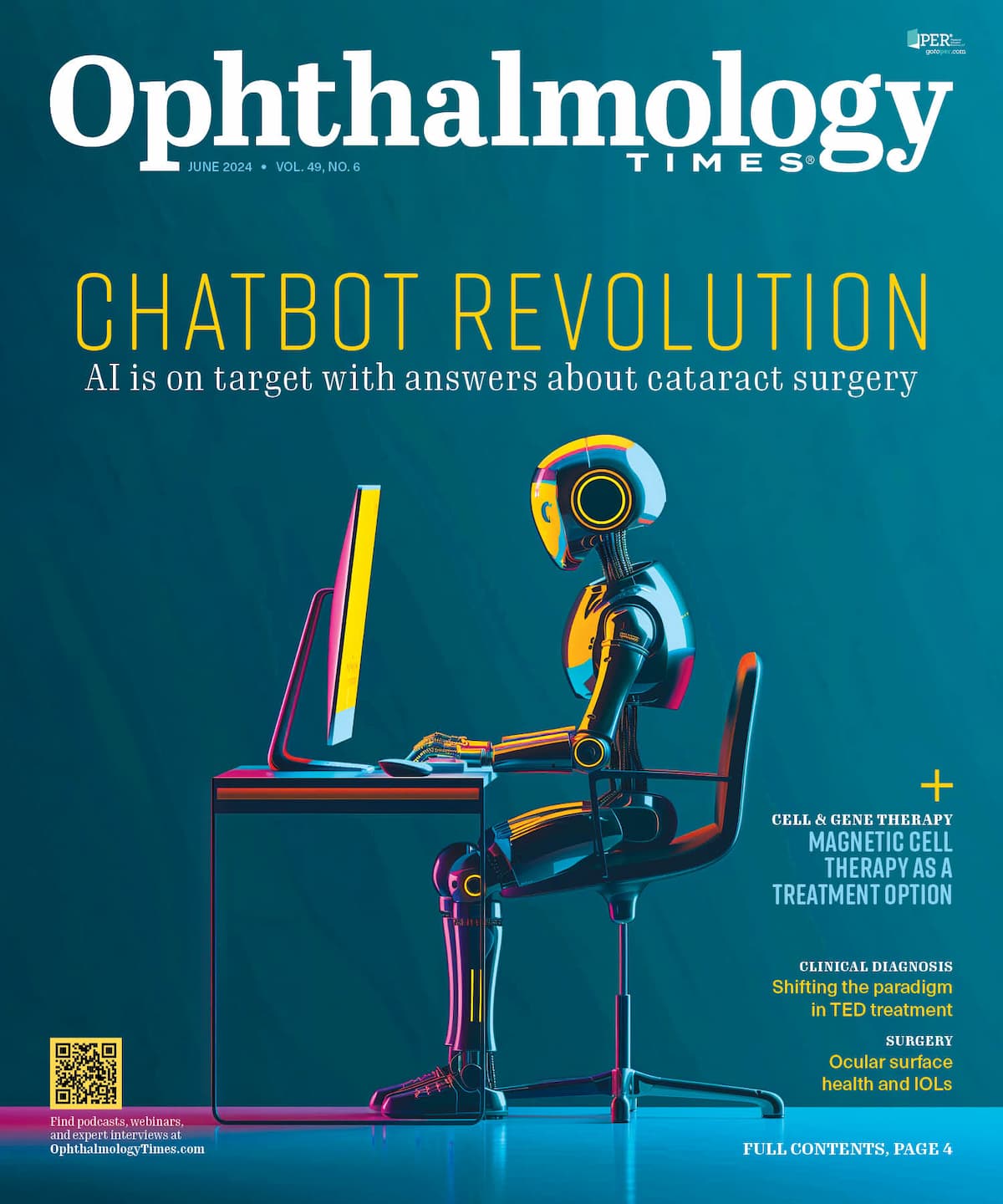Publication
Article
Digital Edition
Ocular surface health and IOL choices
Author(s):
Enhanced monofocal technology may benefit patients with cataracts and dry eye.
(Image Credit: AdobeStock/Oktay)

As IOL designs seek to keep pace with patients’ visual expectations, the importance of a healthy ocular surface for ensuring optimal outcomes cannot be overemphasized.
Because of its highly prevalent nature, particularly in this patient population, I presume 100% of my patients who have undergone cataract surgery have dry eye disease (DED) until proven otherwise.
Therefore, my examination starts with determining whether they are having subjective symptoms of DED, such as fluctuating vision, burning, foreign body sensation, tearing, redness, or tired eyes.
However, patients rarely say that their eyes feel dry. Rather, they say that their eyes are tired or sore, especially toward the end of the day, and their vision fluctuates. These are red flags for dryness.
Testing, exam
For my objective ocular surface analysis, I rely on the basics: fluorescein staining and tear break-up time. Even in the absence of staining, patients may have a poor tear film, which can be observed by having them keep their eye open for at least 10 seconds. Evaporative dry eye with tear film instability is the most common type of dry eye we see, and there will often be no staining at all.
I move to the lid margins, gently pushing on the meibomian glands. No meibum or murky, turbid-looking meibum indicates severe meibomian gland disease. While examining the lashes for scurf, I have patients look down in order to identify any Demodex collarettes at the base of the lashes. In the past, these widely prevalent mites—a very common contributor to DED and blepharitis—were often missed. Inflammation or erythema along the lid margin also often occurs with Demodex.
Measuring tear osmolarity preoperatively provides an objective numerical value and helps quantify the severity of DED. I often use that value with the rest of the overall assessments to determine whether a patient requires aggressive dry eye therapy preoperatively, and it affects how I counsel the patient and set expectations. Ultimately, tear osmolarity influences my IOL selection.
Some patients with DED may not be suitable for a presbyopia-correcting IOL, and I may choose an extended depth-of-focus (EDOF) lens or monofocal instead of a multifocal implant.
I let patients know that DED is a very common condition that we must treat prior to surgery. Otherwise, it may cause irritation and potentially result in poor visual quality, even if the surgery is perfect. These patients are often asymptomatic and therefore require more chair time and education. Tear osmolarity is a very useful metric in helping patients understand that they are not within the normal range.
Preoperative regimen
My preoperative regimen for virtually all my cataract patients includes a preservative-free artificial tear before surgery, every hour, and an ointment at night. I also direct them to use warm compresses and lid scrubs. I like Ivizia (Théa) with its proprietary multidose preservative-free bottle that instills a consistent amount every time, unlike traditional droppers and vials.
The unique formulation with hyaluronic acid, povidone, and trehalose help to preserve tear film stability. In fact, many over-the-counter (OTC) products have begun incorporating advanced ingredients and novel delivery methods.
If patients have moderate to severe DED, I add a low-potency steroid to calm the surface and may put them on a cyclosporine product. Previously, I would reserve the latter agents for postoperative use; however, newer formulations contain optimized concentrations and start working faster, which is important in the preoperative period. I reassess patients at
2 weeks for objective and subjective signs of improvement, including repeat tear osmolarity. If I’m confident that the patient’s level of DED can be controlled long term, I will likely move forward with a multifocal IOL.
If the patient is uncomfortable and the signs still look severe at 2 weeks, I will then counsel them to use drops indefinitely to manage their level of DED. I further explain that they will need multiple drops right after surgery, which will be tapered over time as they improve. I reassure them that although their treatment is for the long term, they will feel better.
Enhanced monofocal
For those patients with more severe DED, I rule out a multifocal and I may consider an EDOF lens. Although I believe they can offer better quality of vision than multifocal lenses, especially at distance, there are still some compromises.
The best option for many of these patients is an enhanced monofocal IOL. I explain that their ocular surface precludes me from using a presbyopia-correcting implant, but the great news is that they may get some freedom from spectacles.
The Tecnis Eyhance (Johnson & Johnson Surgical Vision) enhanced monofocal is part of this expanding category that provides greater range of vision than our traditional monofocal lenses. The Eyhance design extends the depth of focus and also offers excellent image contrast in low light. I find that the lens works best when combined with a blended vision or minimonovision approach. I add a small amount of myopia in the nondominant eye to achieve more near vision and retain more distance vision vs a traditional monofocal IOL. With Eyhance, I’ll typically aim for –1.00 diopter in the nondominant eye. Many of my patients can see as well as J2 or even J1 uncorrected after surgery, with good distance vision. I make sure they understand that they are still going to need glasses for things like fine print and nighttime driving, but they will be free of glasses for as long as possible during the day.
Conclusion
A healthy ocular surface has an impact on all aspects of cataract surgery. As IOL technology evolves to deliver even more refined visual results, treating DED before surgery becomes increasingly crucial. Fortunately, we have a plethora of OTC and prescription therapies to help prepare patients for optimal outcomes. At the same time, enhanced monofocal IOLs may help make increased freedom from glasses attainable for more of our patients.

Dagny Zhu, MD
E: dagny.zhu@nvisioncenters.com
Zhu is a cornea, cataract, and refractive surgeon; medical director; and partner at NVISION Eye Centers in Rowland Heights, California. As a key opinion leader in advanced laser vision correction and cataract surgery, Zhu serves as medical adviser to multiple ophthalmic companies and has been featured in over 300 lectures, presentations, and publications. Follow her @dzeyemd on Instagram and X (formerly Twitter). She is a consultant to Johnson & Johnson Vision.

Newsletter
Don’t miss out—get Ophthalmology Times updates on the latest clinical advancements and expert interviews, straight to your inbox.





